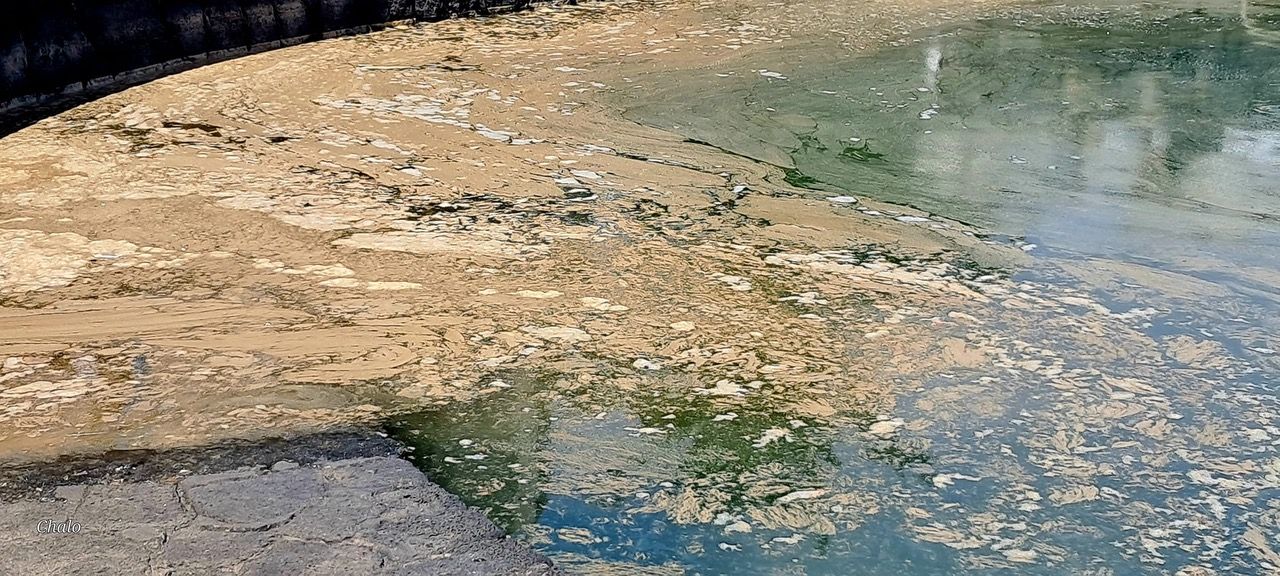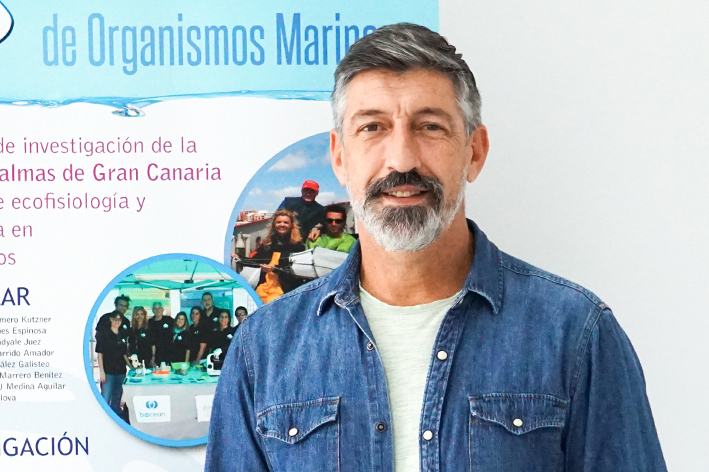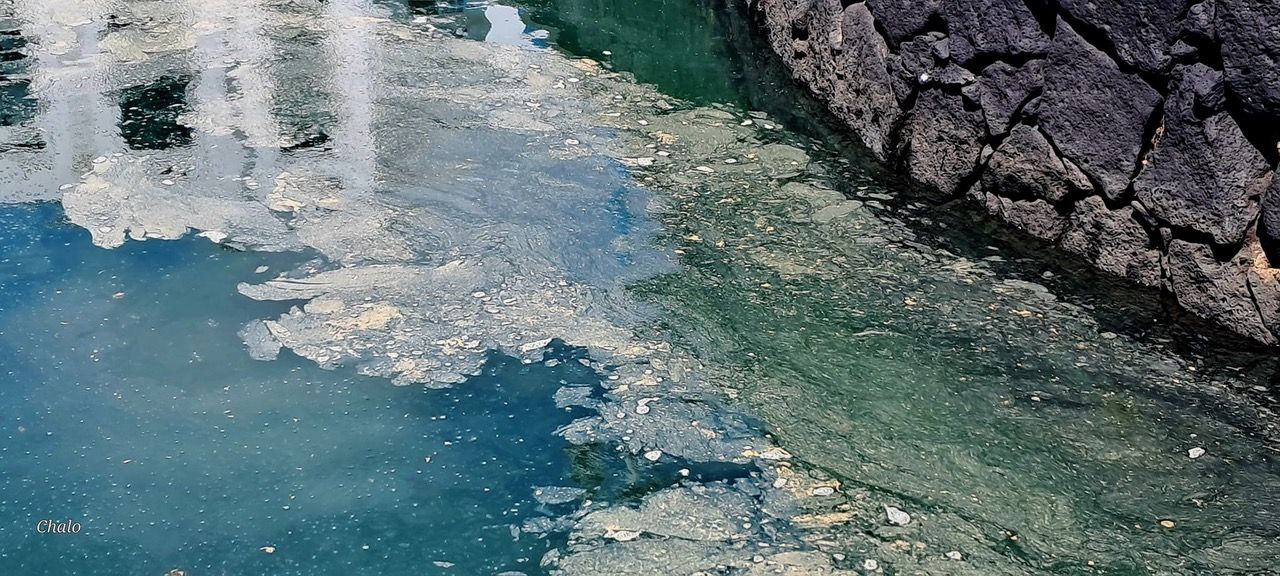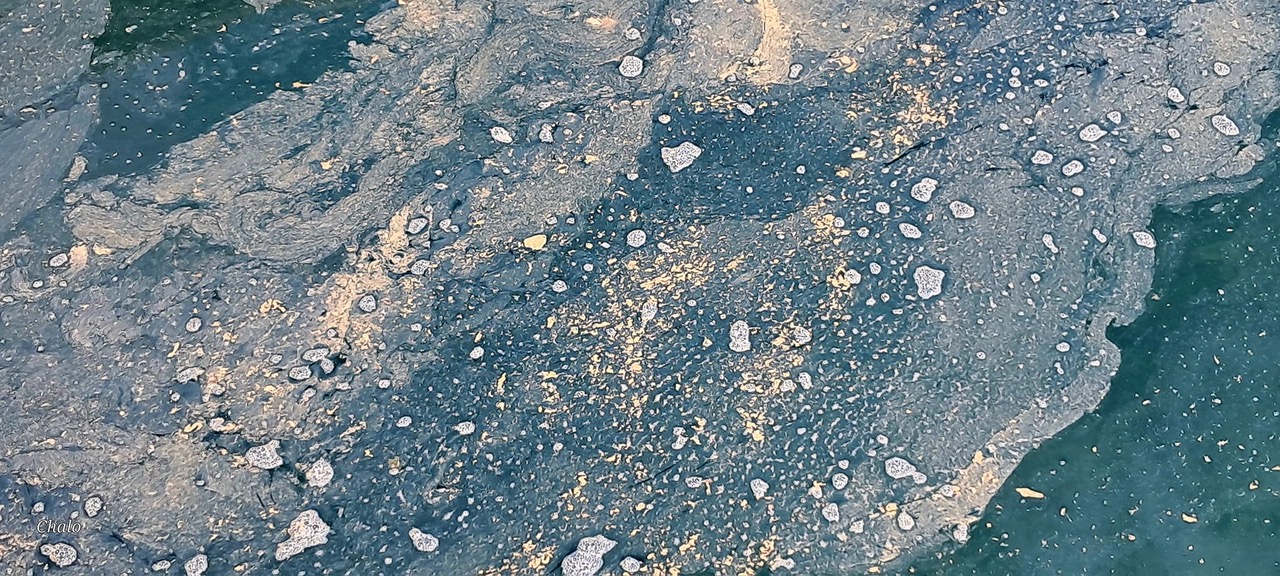This has been confirmed by the researcher Emilio Soler, from the EOMAR group of the ECOAQUA Institute, after carrying out a report
The presence of large spots, found during this week, in the inland waters of Charco de San Ginés, have a scientific explanation. This was determined by a report received by the Arrecife City Council, at the request of the mayor of the city, Yonathan de León, prepared by the EOMAR group of the ECOAQUA institute of the University of Las Palmas de Gran Canaria.
In recent days several citizens have shared images on social media about the presence of large stains in the area of Charco del Ginés, near the Cuatro Esquinas. The initial impression conveyed waste or dirt, according to the comments shared on social media. Faced with this presence, jointly the Mayor Yonathan de León, and the Councilor for Beaches and Environment, Davinia Déniz, had asked the technicians of the Environmental Department of the City of Arrecife for information on the possible origins of these stains in this area of Charco de San Ginés.
 San Ginés Puddle
San Ginés Puddle
In the last few hours, it has been officially confirmed that these morning events have their origin in the presence, at certain times of the year, of cyanobacteria of marine origin.
This is stated by an authoritative voice, and a connoisseur of Arrecife's marina, its marine flora and fauna. The doctor in Marine Sciences, Emilio Soler Onís, member of the EOMAR research team of the ECOAQUA Institute of the ULPGC, who has elaborated a scientific report that has been sent to the Arrecife City Council, to the Department of Beaches and Environment.
Soler Onís holds a PhD in Marine Sciences from the University of Las Palmas de Gran Canaria, accredited by the IOC- UNESCO (Intergovernmental Oceanographic Commission- UNESCO) as an expert in identification of potentially harmful algae. Taxonomist and researcher of the Spanish Bank of Algae between 2001 and 2019.
He has 30 years of experience in the field of Marine Botany and Phycology and 58 publications on deep-sea red algae, cyanobacteria, diatoms, dinoflagellates, HABs and Paleoclimate. He is currently part of the EOMAR research group of the ECOAQUA Institute of the University of Las Palmas de Gran Canaria and develops his scientific work as a doctoral researcher at the Canary Observatory of Harmful Algae of the Fundación Canaria Parque Científico Tecnológico of the ULPGC.
 Emilio Soler Onís, member of the EOMAR research team of the ECOAQUA Institute of the ULPGC
Emilio Soler Onís, member of the EOMAR research team of the ECOAQUA Institute of the ULPGC
The Councilor for Beaches and Environment, Davinia Déniz, advocates that citizens have direct information of this origin, and stop linking the appearance of these stains with spills.
SAN GINES PUDDLE REPORT
According to this report "Trichodesmium erythraeum is a diazotrophic cyanobacterium capable of fixing atmospheric nitrogen, common in the oceanic waters of the Canary Islands and with a prominent role in the biogeochemical cycles of the oceans for the nutrients they release during and at the end of their proliferations, and which can form large patches in coastal areas protected from prevailing winds and waves. The ability to fix atmospheric nitrogen together with the ability to achieve high growth rates under these temperature conditions, gives them a competitive advantage over other photosynthetic organisms.
In Charco San Ginés, Arrecife, the phenomenon of massive growth and accumulation is recurrent in this locality and has been observed since June 2022, although depending on climatic conditions such as temperature and prevailing winds, as well as the tidal regime, this natural phenomenon can be accentuated and cause large persistent floating stains. They are a consequence of the combined effects of the weather, which varies and changes rapidly in the short term, and human activity, which has irreversible effects in the medium and long term if no action is taken.
In addition to the climatic effects and the marine dynamics of the Puddle, there are others that also facilitate the appearance of these stains, such as the dumping of garbage and repair products from anchored boats, windblown garbage, coastal works that have changed the current regime and water renewal in the interior of the Puddle, as well as the excessive settling and sedimentation of silt and clay.
 San Ginés Puddle
San Ginés Puddle
Colloquially, cyanobacteria are included in the group of microalgae, although they are not, so it is not unusual to find them referred to in the press and in non-specialized media as "microalgae".
As for the relationship between massive growths of this cyanobacteria with sewage or urban wastewater discharges, there are no studies with a proven relationship where urban discharges can generate massive blooms of Trichodesmium such as those found in the Canary Islands, nor that the rates of N2 fixation increase significantly enough to generate these blooms.
Therefore, there is no evidence of the effect of wastewater discharges on the formation of blooms or their reactivation. In fact, the reactivation of Trichodesmium blooms always coincides with episodes of increased temperature, decreased wind and aerosol inflow. On the other hand, these coastal blooms have occurred both in areas affected by spills and in areas where there is no presence of spills, such as in the Mar de Las Palmas in El Hierro or in La Gomera.
In social media and part of the media in the islands, the argument of urban spills has been used to justify a possible relationship with blooms of T. erythraeum, creating social alarm and misinformation. This is false, since the spills do not increase the rate of N2 fixation in Trichodesmium and therefore they do not induce its growth or behavior. T. erythraeum is diazotrophic, i.e. it has the capacity to fix atmospheric nitrogen and does not depend on sources of nitrogen compounds such as nitrites, nitrates or ammonium for its growth, i.e. it is an organism with a metabolism independent of anthropogenic nitrogen sources.
Trichodesmium erythraeum is not included in the IOC-UNESCO list of TOXIC microalgae and cyanobacteria species, although in humans it can cause mucosal irritation in exceptional cases after prolonged exposure, i.e. it can have a harmful, but not toxic effect. There are no recorded cases of direct toxicity on humans. In case of presence of Blooms, it is recommended not to bathe near Trichodesmium stains, use common sense".


